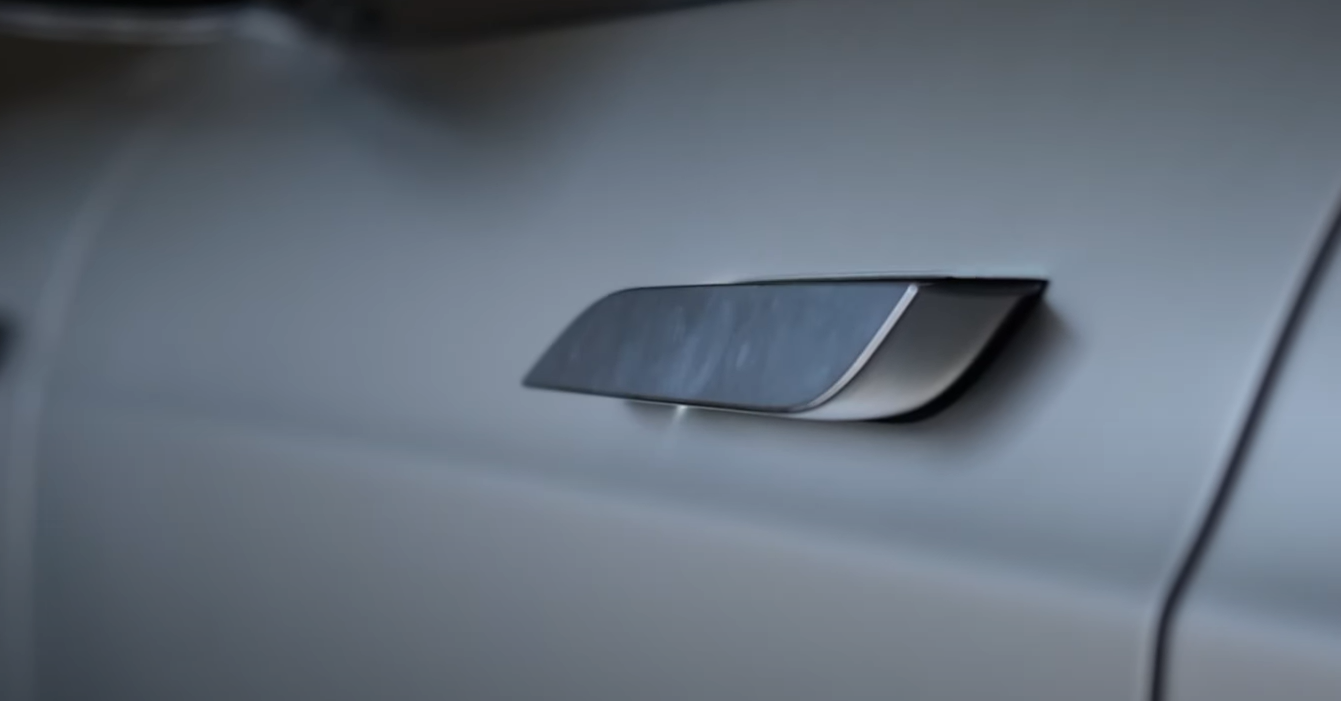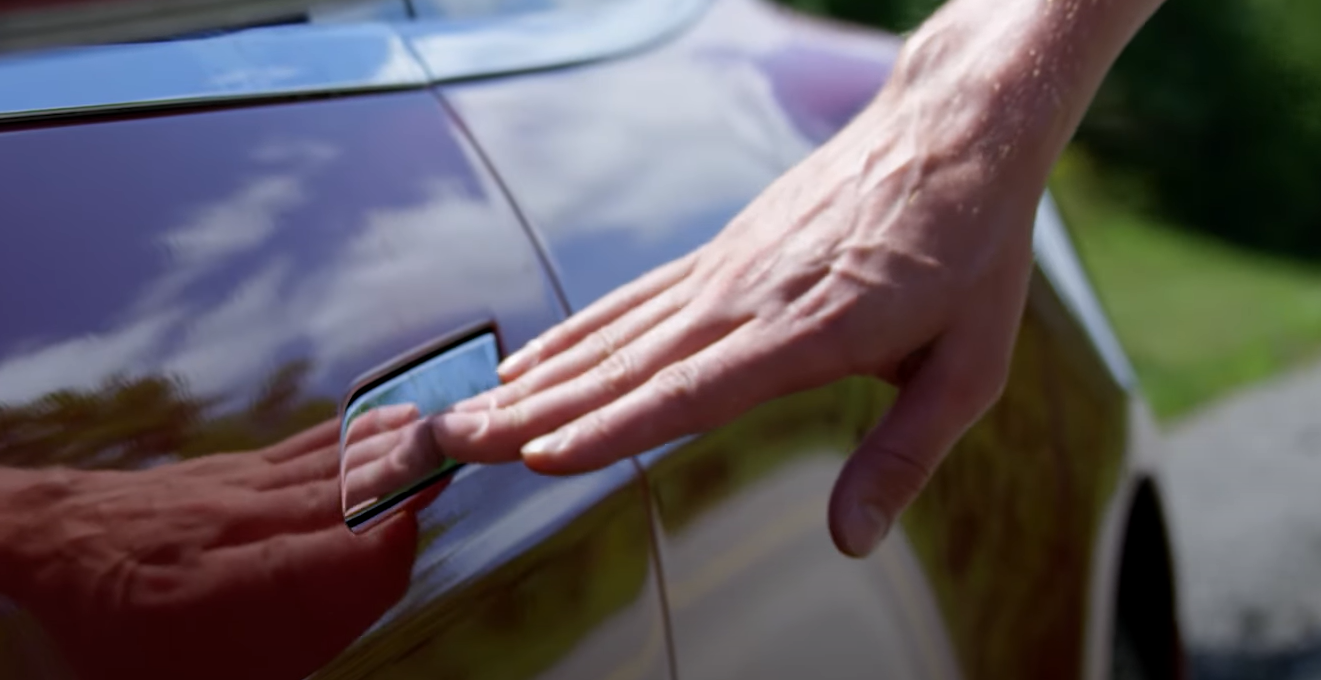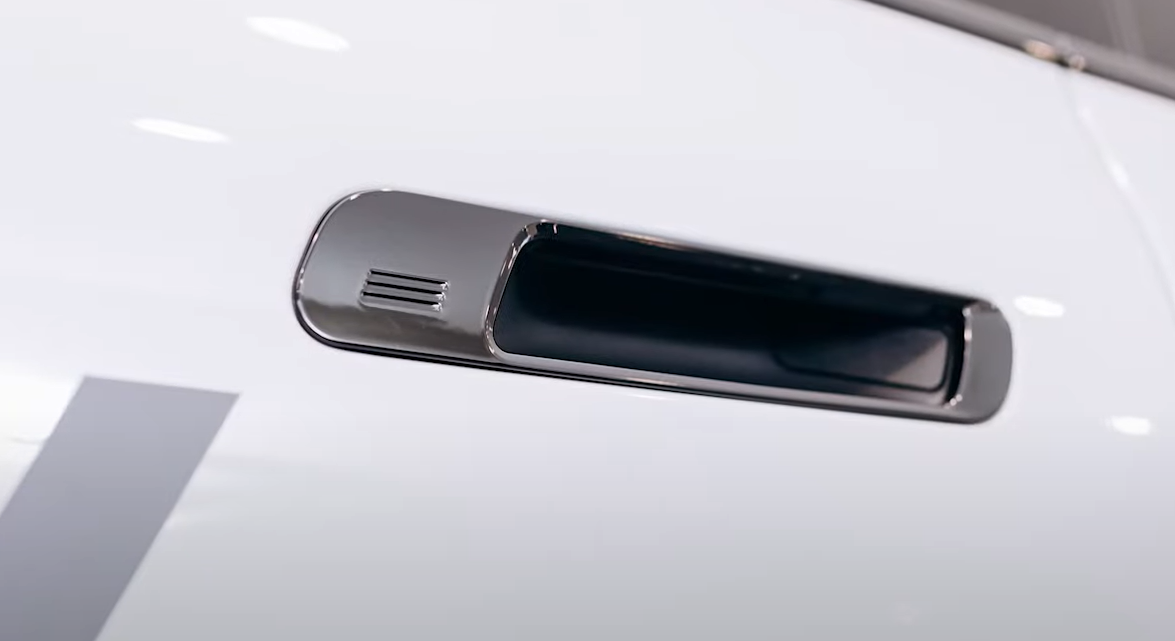SNOAAA5 April 2024 DRV8220 , FDC1004-Q1 , LDC3114-Q1 , TMAG5131-Q1 , TMAG5173-Q1 , TMAG6180-Q1
- 1
- Abstract
- Trademarks
- 1Introduction
- 2Automotive Door Handle Architectures
- 3Functional Demo Design
- 4Detailed Design Flow for Door Handle Functions
- 5Summary
- 6References
2 Automotive Door Handle Architectures
From driver and passenger doors to hood and tailgate release systems, automotive door handles come in several different mechanical form factors. Rotational and parallel deployable door handles are typically flush with the body of the door in their home position. An actuator extends the handle outward to present the handle to the user under desired circumstances. Fixed flush door handles do not move, and instead involve a surface or cavity recessed into the door. Hood and tailgate release systems often make use of a push button or soft touch function to trigger the opening of the door. Each of the aforementioned door handle architectures make use of one or several features from a common set of functions found across different door handle systems, some of which are outlined in the following text.
One critical and common safety feature in any vehicle is detecting when the vehicle doors are either opened or closed. It is imperative for the driver to know if any doors are opened while operating the vehicle, and to have confidence knowing the doors are properly closed when leaving the vehicle.
In deployable door handle systems, reliably tracking the door handle's position as it is extended and retracted provides several benefits. Knowing where the handle is along its arc of travel ensures the door handle is deployed and retracted to the proper positions each time, providing a smooth user experience. This function also prevents damage to the door handle by the actuator over-driving the handle, or can help detect if something is stuck in the handle track. Finally, this feature can even detect when a user is pressing or pulling on the door handle.
 Figure 2-1 Deployable Door Handle in
Extended Position
Figure 2-1 Deployable Door Handle in
Extended PositionSoft-touch or hand proximity detection enables either a gentle press or simply the presence of the driver's hand to trigger different actions within the automotive system. In the case of deployable door handles, this function can serve as an alternative method for triggering the extension of the handle. In fixed flush door handles, the handle is a surface or cavity recessed into the vehicle and does not move. In this case, a soft touch on the handle or a hand in close proximity to the handle can be detected and trigger the opening of the car door.
 Figure 2-2 Soft-Touch or Hand Proximity
Detection for Deployable Door Handle
Figure 2-2 Soft-Touch or Hand Proximity
Detection for Deployable Door Handle Figure 2-3 Recessed Cavity for
Fixed-Flush Door Handle
Figure 2-3 Recessed Cavity for
Fixed-Flush Door HandleSome automotive doors or door handles integrate the use of a button press, such as a hood touch button, door keypad, push-button, or tailgate release system.